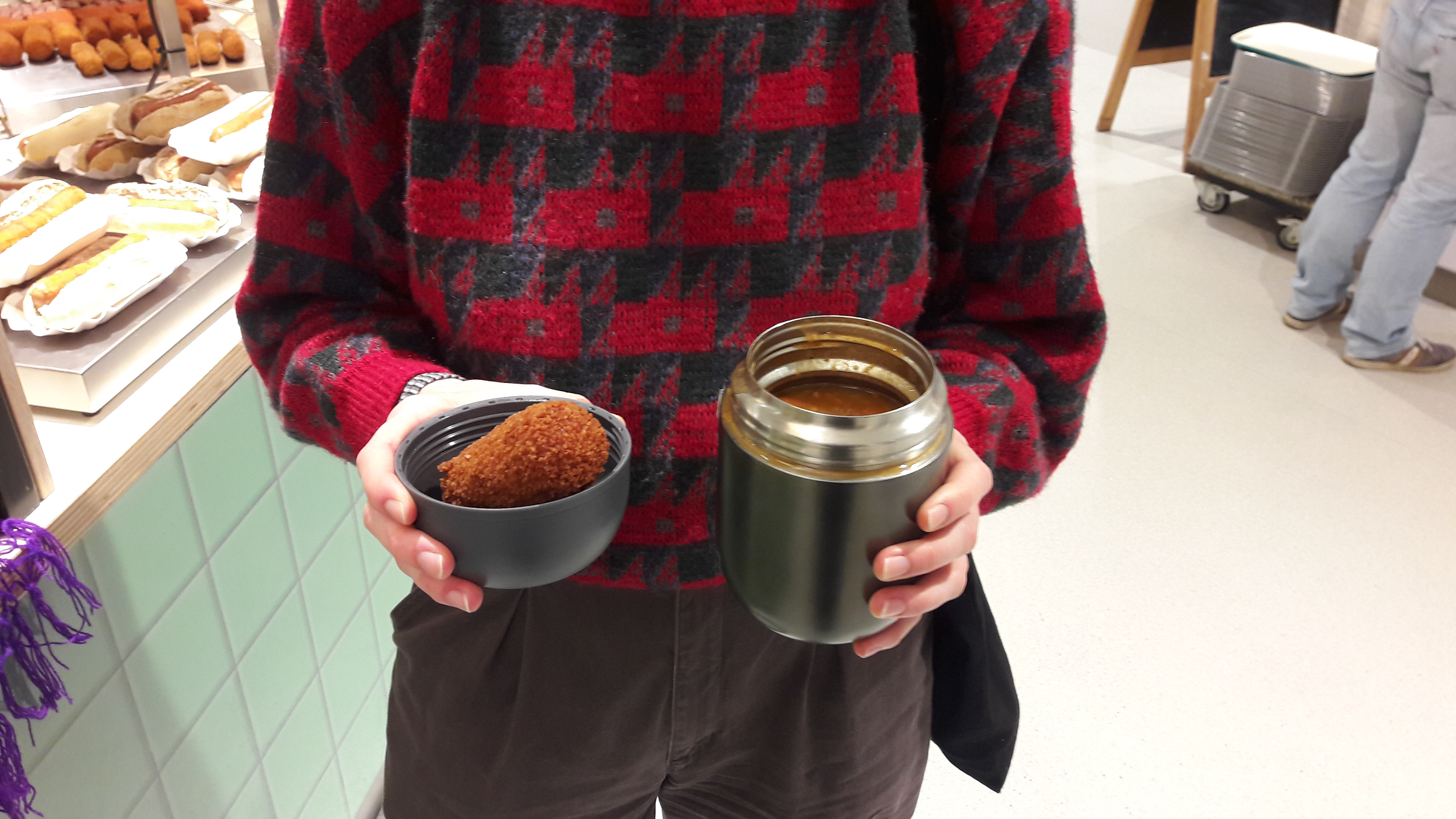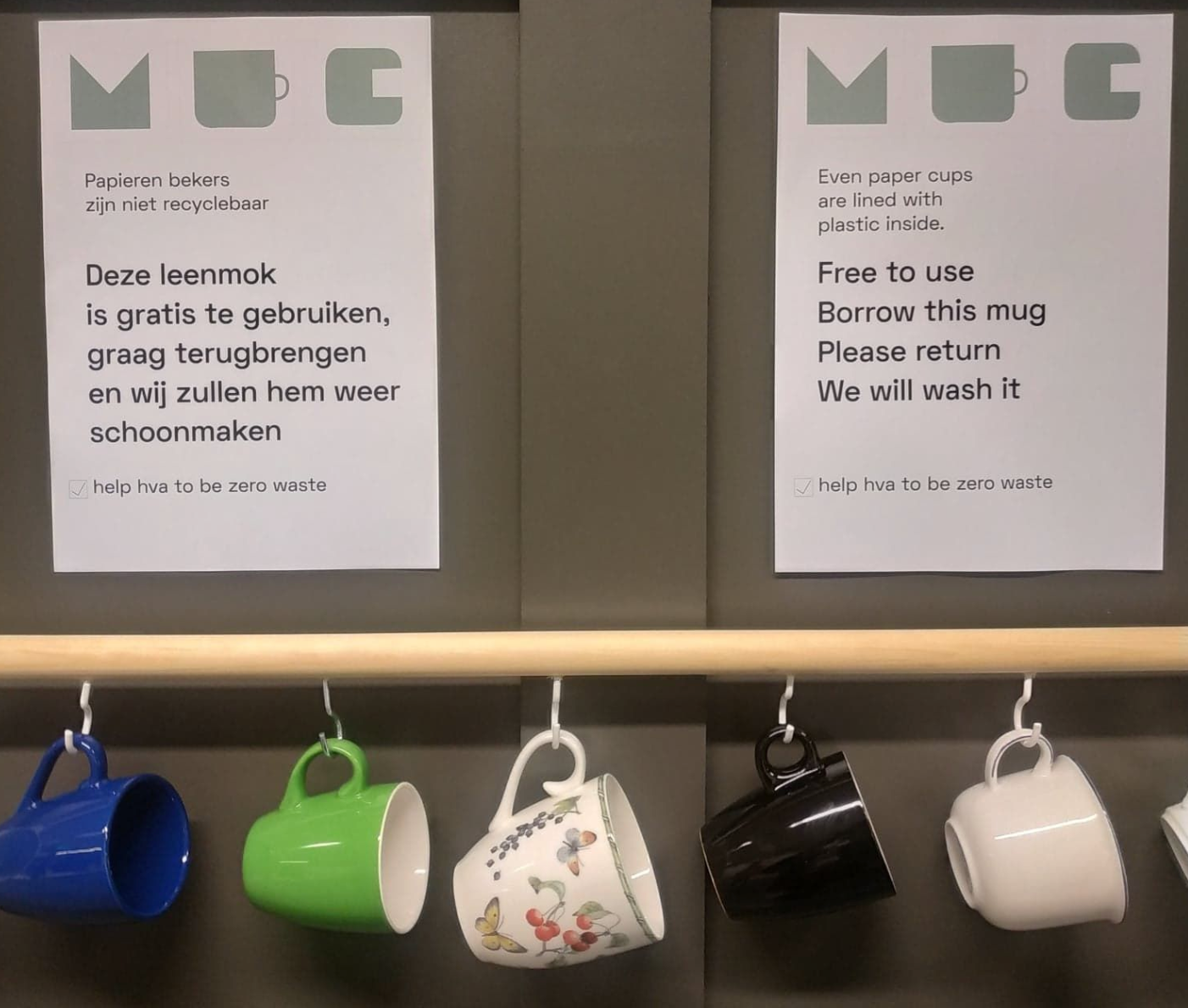How can we foster sustainable behavior change among university students?
We worked with the Amsterdam University Waste Management Department to help jumpstart their mission to become zero waste by 2030. Our end product is a waste-awareness webstory. Our aim was to explore unconventional methods of sustainability communication. We used emotional storytelling and abstract interactive graphics to incite empathy and imagination.
[UX/UI design, research, audio design]
Our Process
We began with immersive field research experiments.
Myself and another teammate lived a zero-waste lifestyle for one month. We dissected the current waste situation at the university through observation and interviews. And, we placed a research intervention in the school with free-to-use mugs.




As we studied single-use disposables, we found that we don't know a lot about where they come from. This unknown inspired our design.
We chose to use storytelling to build awareness for where single-use cups come from and how they are made.
We prototyped two narratives telling the production story of a paper cup: one hyper-factual and one hyper-emotional. We ran an A/B test to measure key metrics. Ultimately, we chose to combine the two methods. The emotional method was more effective in eliciting empathy, interest and overall enjoyment (as we learned from qualitative feedback), but, the factual method was imperative to securing action and understanding.
We explored different technologies and settled on designing an immersive webstory.
This project was completed remotely during the COVID-19 crisis in an international team of 4 designers and developers as part of the Master's in Digital Design at the Amsterdam University of Applied Sciences.
Meet the team (from left to right): Lennard, myself, Alexandra and Yes.